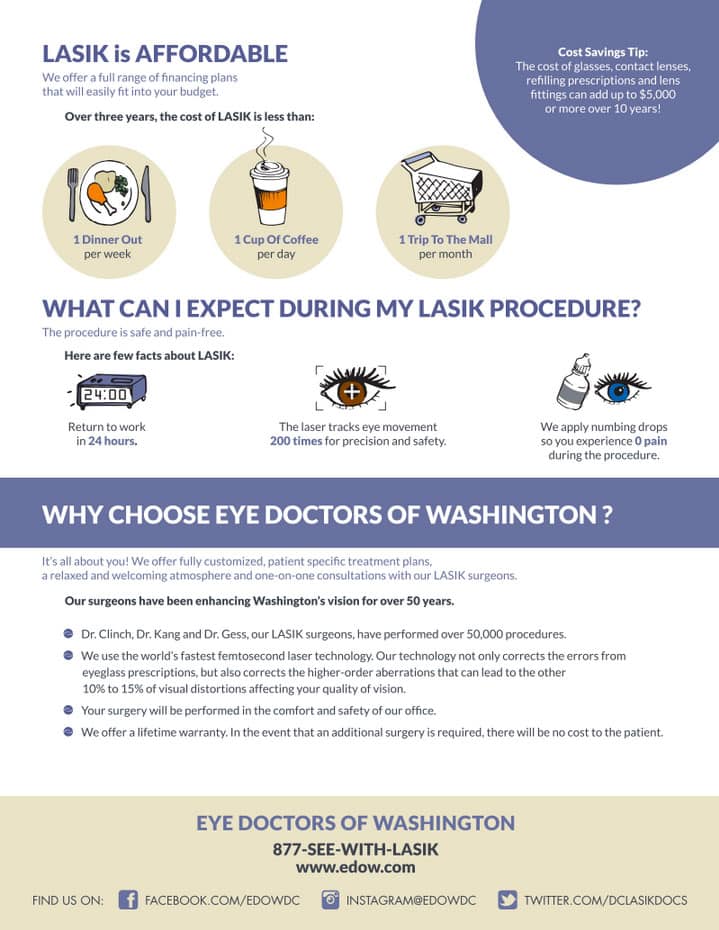This Short Article Talks About The LASIK Alternatives For Thin Corneas

Authored by-Winstead McNeil
There are many people that have been told they can't get approved for LASIK eye surgery as a result of inadequate corneal density. Luckily, there are more resources for them to think about.
These brand-new treatment options are much more effective than LASIK at dealing with certain types of vision troubles as well as decreasing the need for glasses or get in touches with. They're additionally a lot more inexpensive than LASIK!
1. PRK
LASIK is a popular laser vision correction surgical treatment, but not every person is an ideal candidate for it. This is particularly true for those with thin corneas or those who take part in energetic sports or operate in high-risk tasks that place them at a greater threat of injury to their eyes.
Thankfully, there are various other lasik alternatives that work as well as risk-free for individuals who do not receive LASIK. Among these is PRK (photorefractive keratectomy).
Like LASIK, this treatment intends to permanently remedy your refractive mistake. It also enables you to reduce or eliminate the demand for glasses and also calls.
2. ASA
If you're thinking of LASIK but have completely dry eyes or slim corneas, ASA (Advanced Surface area Ablation) might be the ideal alternative for you. This laser vision adjustment method improves the outer layer of your cornea, allowing your doctor to utilize an excimer laser to fix your eye's refractive error.
ASA is an advanced variation of PRK, or photorefractive keratectomy, which was the precursor to LASIK and also was first authorized by the FDA in 1995. During this procedure, your epithelium is separated, dampened with a watered down alcohol remedy, and folded up back, prior to the excimer laser reshapes the cornea.
ASA has less risks than LASIK or PRK, as well as it generally takes a much shorter recuperation period. Nevertheless, there are some negative effects that ASA patients could experience, including post-operative discomfort and also pain, undercorrection or overcorrection, and also night vision disruptions.
3. Refractive lens exchange
For patients who are severely myopic or farsighted as well as can not undertake laser vision correction procedures like LASIK or PRK, refractive lens exchange is a fantastic choice. This procedure is executed by replacing your all-natural lens with an unique intraocular lens (IOL) that remedies your refractive mistake and eliminates the demand for glasses or get in touches with.
If you deal with presbyopia, an age-related eye condition that causes you to have trouble seeing at close ranges, Refractive lens exchange is the best choice offered to you. This is due to the fact that LASIK can not successfully fix this eye problem as it works on the cornea.
For the majority of people, the aging procedure triggers the lenses in their eyes to shed adaptability as well as become less adaptable. This creates problems focusing on up close things such as analysis and also dialing phones.
4. Monovision
Monovision is an approach of vision improvement that uses a contact lens to deal with for both near and far ranges. It is most generally utilized to treat presbyopia, which is a common eye problem that takes place as individuals age.
Retina can additionally be a choice to LASIK in some clients. With monovision, one eye is fixed for distance vision and the other is dealt with for close-up vision (near vision).
Many individuals who use monovision get in touch with lenses do not require reviewing glasses or bifocals. However, this is not constantly the instance.
In a handful of instances, it can be essential to put on glasses when working with great information or concentrating on close-up objects.
Surgical choices for monovision include laser surgical treatment and intraocular lens insertion. In the short-term, monovision might be attempted with call lenses to identify if it is appropriate for an individual.

